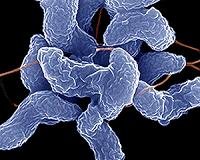| . |  |
. |
Philadelphia PA (SPX) Nov 15, 2010 An international team of scientists, including a leading evolutionary biologist from the Academy of Natural Sciences, have reset the agenda for future research in the highly diverse Amazon region by showing that the extraordinary diversity found there is much older than generally thought. The findings from this study, which draws on research by the Academy's Dr. John Lundberg and other scientists, were published as a review article in this week's edition of Science. The study shows that Amazonian diversity has evolved as by-product of the Andean mountain uplift over millions of years, despite previous focus on the more recent history. The vast Amazonian rainforest is arguably the most species-rich terrestrial ecosystem in the world, yet the timing of the original and evolutionary causes of this diversity are a matter of debate. The authors compare modern diversity patterns with geological and molecular datasets and show that the highest species diversity in Amazonia today is found on a surface of Andean origin spanning more than a million square kilometers, which has been formed in the past 23 million years. This tight link between the geological history of the Andes and the development of the Amazon basin means that studies aiming to understand how the mega-diverse Amazonian forests have evolved need to look further back in time, to the past 20 million years.
Debate abounds on origin of Amazonian biodiversity In their review article, lead author Dr. Carina Hoorn of the University of Amsterdam, Lundberg, and their co-authors list the extraordinary flora and fauna that have evolved in the dynamic Amazonian landscape, which in turn has developed at a pace dictated by the reshuffling (Pacific) tectonic plates and subsequent uplift in the Andes. The paleogeographic evolution dictated by this geological reconfiguration included the formation of a vast wetland which, after the onset of the Amazon River around 10 million years ago, dried up and was open to colonization by plants and animals. In this article, fittingly published in the International Year of Biodiversity, the authors encourage scientists to refocus when seeking explanations for the evolution of modern biodiversity. In the case of Amazonia, the pre-Quaternary flora and fauna already showed a very high level of species richness which was, in the case of reptiles and plants, even higher than found today. "The Amazonian region, from its highest mountains to immense lowland rivers, supports a tremendous biological richness of species," said Lundberg, curator and Chaplin chair of ichthyology at the Academy of Natural Sciences in Philadelphia. "Many previously unseen species are discovered and documented every year."
Share This Article With Planet Earth
Related Links Academy of Natural Sciences Darwin Today At TerraDaily.com
 The Myth Of A Germ-Free World And Antimicrobial Products
The Myth Of A Germ-Free World And Antimicrobial ProductsTempe AZ (SPX) Nov 11, 2010 Killing microorganisms has become a national obsession. A pair of antimicrobial compounds known as triclosan and triclocarban are lately the weapons of choice in our war of attrition against the microbial world. Both chemicals are found in an array of personal care products like antimicrobial soaps, and triclosan also is formulated into everyday items ranging from plastics and toys to articles o ... read more |
|
| The content herein, unless otherwise known to be public domain, are Copyright 1995-2010 - SpaceDaily. AFP and UPI Wire Stories are copyright Agence France-Presse and United Press International. ESA Portal Reports are copyright European Space Agency. All NASA sourced material is public domain. Additional copyrights may apply in whole or part to other bona fide parties. Advertising does not imply endorsement,agreement or approval of any opinions, statements or information provided by SpaceDaily on any Web page published or hosted by SpaceDaily. Privacy Statement |